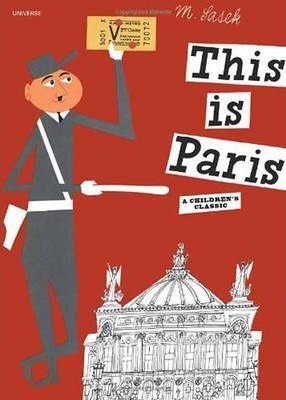 Welcome to Paris, the City of… Cats!
Welcome to Paris, the City of… Cats!
There are … million people living here in the capital of France, one big river… dozens of monuments, dozens of churches, dozens of museums… and thousands of cats.
This is the 2019 CITINERARY for Paris… the rules are as always simple… IT is actually only one rule… can you find IT? 🙂
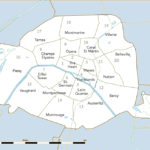 Paris is divided into administrative districts, arrondissements in French. The number of the arrondissement is indicated by the last two digits in most Parisian postal codes, such as 75001 for the 1st arrondissement of Paris (Ie arrondissement). Furthermore, each arrondissement is subdivided administratively into quartiers.
Paris is divided into administrative districts, arrondissements in French. The number of the arrondissement is indicated by the last two digits in most Parisian postal codes, such as 75001 for the 1st arrondissement of Paris (Ie arrondissement). Furthermore, each arrondissement is subdivided administratively into quartiers.
How many arrondissements are in Paris?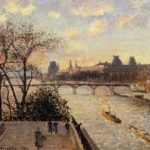 IT springs 446m above sea level on the Plateau of Langres in Bourgogne-Franche-Comté. Throughout its 777kms journey, IT flows through the towns of Troyes, Paris and Rouen. IT eventually reaches the English Channel via a wide estuary delineated by the ports Le Havre and Honfleur. IT inherited its name from Sequana, the Celtic deity that inhabited its sacred source. IT flows for 13km through Paris from east to west and at 26,72m above sea level. How many bridges span THIS river in Paris?
IT springs 446m above sea level on the Plateau of Langres in Bourgogne-Franche-Comté. Throughout its 777kms journey, IT flows through the towns of Troyes, Paris and Rouen. IT eventually reaches the English Channel via a wide estuary delineated by the ports Le Havre and Honfleur. IT inherited its name from Sequana, the Celtic deity that inhabited its sacred source. IT flows for 13km through Paris from east to west and at 26,72m above sea level. How many bridges span THIS river in Paris? The largest of the two remaining natural islands in the Seine within the city of Paris, IT is the birthplace and center of Paris! Settled 2,000 years ago by a tribe of fishermen, the Parisii, IT is now home to both the Palais de Justice and the Notre Dame Cathedral. Can you find the Point Zero marker?
The largest of the two remaining natural islands in the Seine within the city of Paris, IT is the birthplace and center of Paris! Settled 2,000 years ago by a tribe of fishermen, the Parisii, IT is now home to both the Palais de Justice and the Notre Dame Cathedral. Can you find the Point Zero marker?  IT is not nearly as old as its sister island, having only been created in the 17th century. A peaceful oasis of calm in the busy Paris centre, IT has only narrow one-way streets. IT is connected to the rest of Paris by four bridges to both banks of the river and to the Île de la Cité by the Pont Saint-Louis. Many famous people have lived on THIS island, including Voltaire, Marie Curie and Georges Pompidou. Can you find some of these residences? Does any of them stand out in some way?
IT is not nearly as old as its sister island, having only been created in the 17th century. A peaceful oasis of calm in the busy Paris centre, IT has only narrow one-way streets. IT is connected to the rest of Paris by four bridges to both banks of the river and to the Île de la Cité by the Pont Saint-Louis. Many famous people have lived on THIS island, including Voltaire, Marie Curie and Georges Pompidou. Can you find some of these residences? Does any of them stand out in some way?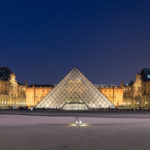 IT was the residence of the kings of France from the time of Philippe Auguste at the end of the 12c until the reign of Louis XIV who moved the royal court to Versailles. IT became a museum in 1791 bringing together “all the sciences and arts”, as decreed by the Assemblee Nationale. Today IT houses one of the most significant art collections in the world.
IT was the residence of the kings of France from the time of Philippe Auguste at the end of the 12c until the reign of Louis XIV who moved the royal court to Versailles. IT became a museum in 1791 bringing together “all the sciences and arts”, as decreed by the Assemblee Nationale. Today IT houses one of the most significant art collections in the world.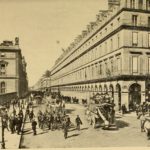 THIS elegant street was laid out in 1802 by Napoleon, part of his campaign to proclaim Paris as the capital of Europe. IT is named after the victory over the Austrians in 1797, and IT stretches from Place de la Concorde to the Marais, although the section that runs east from the Louvre was finished only in 1865. Can you find the statue of Jeanne d’Arc?
THIS elegant street was laid out in 1802 by Napoleon, part of his campaign to proclaim Paris as the capital of Europe. IT is named after the victory over the Austrians in 1797, and IT stretches from Place de la Concorde to the Marais, although the section that runs east from the Louvre was finished only in 1865. Can you find the statue of Jeanne d’Arc? Built in 1624, IT was originally the home of Cardinal Richelieu, who, during the reign of Louis XIII, was considered the most powerful man in France. Later, IT became the childhood home of Louis XIV. In the 1780s, Louis XVI’s brother, the Duke of Orleans, enclosed the gardens with arcades with cafes, shops, and theaters.
Built in 1624, IT was originally the home of Cardinal Richelieu, who, during the reign of Louis XIII, was considered the most powerful man in France. Later, IT became the childhood home of Louis XIV. In the 1780s, Louis XVI’s brother, the Duke of Orleans, enclosed the gardens with arcades with cafes, shops, and theaters.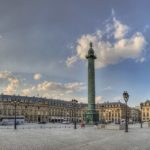 Built in 1699 to reflect the glory of the equestrian statue of Louis XIV that was placed in the center, IT failed to impress the revolutionaries who melted the statue to make cannons. Started in 1806 and completed in 1810, a giant column based on Trajan’s Column in Rome was built here to celebrate the victory of Austerlitz. This too was torn down by revolutionaries in 1871 and a copy now stands in its place.
Built in 1699 to reflect the glory of the equestrian statue of Louis XIV that was placed in the center, IT failed to impress the revolutionaries who melted the statue to make cannons. Started in 1806 and completed in 1810, a giant column based on Trajan’s Column in Rome was built here to celebrate the victory of Austerlitz. This too was torn down by revolutionaries in 1871 and a copy now stands in its place.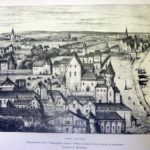 Straddling the Paris Centre arrondissement, THIS district with a village feel was built on marshland, hence its name. IT is one of the few areas in Paris untouched by Haussmann’s renovation, retraining ITS narrow medieval streets, little squares and grand mansions dating from the 17th and 18th centuries. Situated in the triangle defined by Hôtel de Ville, Place de la Bastille, and place de la République it is one of the most beautiful quartier of Paris. What is a hôtel particulier? How many can you find?
Straddling the Paris Centre arrondissement, THIS district with a village feel was built on marshland, hence its name. IT is one of the few areas in Paris untouched by Haussmann’s renovation, retraining ITS narrow medieval streets, little squares and grand mansions dating from the 17th and 18th centuries. Situated in the triangle defined by Hôtel de Ville, Place de la Bastille, and place de la République it is one of the most beautiful quartier of Paris. What is a hôtel particulier? How many can you find? In the northern part of the Marais is a lovely little market tucked away with two main entrances via small passageways. IT is the oldest of the many city marchés having been constructed in 1628. If you don’t know to look for it, you just may pass it by. There have been several names for this market. The first was le Petit Marche du Marais followed by the Marais de Temple. The current name is in memory of the enfants housed in a hospital created by Marguerite de Valois in 1536 on rue du Grand Chantier.
In the northern part of the Marais is a lovely little market tucked away with two main entrances via small passageways. IT is the oldest of the many city marchés having been constructed in 1628. If you don’t know to look for it, you just may pass it by. There have been several names for this market. The first was le Petit Marche du Marais followed by the Marais de Temple. The current name is in memory of the enfants housed in a hospital created by Marguerite de Valois in 1536 on rue du Grand Chantier.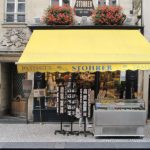 IT is the oldest patisserie in Paris, founded in 1730 by King Louis XV’s pastry chef, Nicolas Stohrer. Still located rue Montorgueil, this establishment has taken on mythical qualities over time. Now listed as a historical site, its lavish décor was designed by a student of Paul Baudry, who decorated the Opéra Garnier. Century after century, this mecca for both sweet and savory delicacies, where everything is prepared in-house, has offered the best of classic French pastry.
IT is the oldest patisserie in Paris, founded in 1730 by King Louis XV’s pastry chef, Nicolas Stohrer. Still located rue Montorgueil, this establishment has taken on mythical qualities over time. Now listed as a historical site, its lavish décor was designed by a student of Paul Baudry, who decorated the Opéra Garnier. Century after century, this mecca for both sweet and savory delicacies, where everything is prepared in-house, has offered the best of classic French pastry.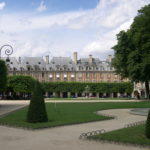 Originally known as the Place Royale, IT was built by Henri IV from 1605 to 1612. A true square (140 m × 140 m), IT is the oldest planned square in Paris. IT is located in the Marais district, and it straddles the dividing-line between the 3rd and 4th arrondissements of Paris. IT was a fashionable and expensive square to live in during the 17th and 18th centuries.
Originally known as the Place Royale, IT was built by Henri IV from 1605 to 1612. A true square (140 m × 140 m), IT is the oldest planned square in Paris. IT is located in the Marais district, and it straddles the dividing-line between the 3rd and 4th arrondissements of Paris. IT was a fashionable and expensive square to live in during the 17th and 18th centuries. IT has been the seat of the Paris City Council since 1357. IT was burned by the Paris Commune during the Commune’s final days in May 1871. IT was rebuilt between 1874 and 1882 following the original design and covered in sculptures of famous Parisians made by some of the city’s most renowned artists. Can you find the Rodin’s sculpture of the 18th century mathematician Jean le Rond d’Alembert? Where can you see a boat with three masts, the symbol of Paris? The city motto is fluctuat nec mergitur (it sails but does not sink).
IT has been the seat of the Paris City Council since 1357. IT was burned by the Paris Commune during the Commune’s final days in May 1871. IT was rebuilt between 1874 and 1882 following the original design and covered in sculptures of famous Parisians made by some of the city’s most renowned artists. Can you find the Rodin’s sculpture of the 18th century mathematician Jean le Rond d’Alembert? Where can you see a boat with three masts, the symbol of Paris? The city motto is fluctuat nec mergitur (it sails but does not sink).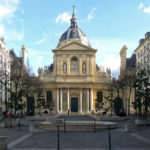 This historical corner of Paris is dominated by the Pantheon and descends gently down to the Seine, with rue St. Jacques -the oldest Roman road in Paris- crossing IT from North to South. IT is the second oldest district of Paris after the Ile de la Cité and has the highest concentration of Gallo-Roman vestiges. IT has been a seat of Universities and a center of learning since the Middle Ages and IT is named after the original scholars of the university who spoke that ancient Roman tongue.
This historical corner of Paris is dominated by the Pantheon and descends gently down to the Seine, with rue St. Jacques -the oldest Roman road in Paris- crossing IT from North to South. IT is the second oldest district of Paris after the Ile de la Cité and has the highest concentration of Gallo-Roman vestiges. IT has been a seat of Universities and a center of learning since the Middle Ages and IT is named after the original scholars of the university who spoke that ancient Roman tongue.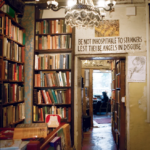 IT is an English-language bookshop in the heart of Paris, on the banks of the Seine, opposite Notre-Dame. Since opening in 1951, it’s been a meeting place for anglophone writers and readers, becoming a Left Bank literary institution.
IT is an English-language bookshop in the heart of Paris, on the banks of the Seine, opposite Notre-Dame. Since opening in 1951, it’s been a meeting place for anglophone writers and readers, becoming a Left Bank literary institution.
I created this bookstore like a man would write a novel, building each room like a chapter, and I like people to open the door the way they open a book, a book that leads into a magic world in their imaginations.
– George Whitman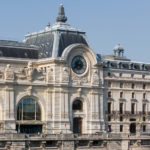 The history of THIS museum, of its building is quite unusual. In the centre of Paris on the banks of the Seine, opposite the Tuileries Gardens, THIS museum was installed in a former railway station, built for the Universal Exhibition of 1900.The building itself could be seen as the first “work of art” in THIS museum, which displays collections of art from the period 1848 to 1914. Can you find the bronze elephant, rhinoceros and horse that welcome visitors to the museum? Can you find Rue Montorgueil in a painting? Who painted it? Who painted Etretat, a small town in Normandy?
The history of THIS museum, of its building is quite unusual. In the centre of Paris on the banks of the Seine, opposite the Tuileries Gardens, THIS museum was installed in a former railway station, built for the Universal Exhibition of 1900.The building itself could be seen as the first “work of art” in THIS museum, which displays collections of art from the period 1848 to 1914. Can you find the bronze elephant, rhinoceros and horse that welcome visitors to the museum? Can you find Rue Montorgueil in a painting? Who painted it? Who painted Etretat, a small town in Normandy?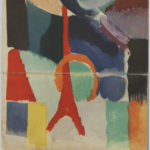 IT was built for the 1889 Exposition Universelle, which was to celebrate the 100th year anniversary of the French Revolution. On the 31st March 1889, IT had been finished in record time – 2 years, 2 months and 5 days – and was established as a veritable technical feat. “IT will be for everyone an observatory and a laboratory the likes of which has never before been available to science.” Do you know any artists that painted it?
IT was built for the 1889 Exposition Universelle, which was to celebrate the 100th year anniversary of the French Revolution. On the 31st March 1889, IT had been finished in record time – 2 years, 2 months and 5 days – and was established as a veritable technical feat. “IT will be for everyone an observatory and a laboratory the likes of which has never before been available to science.” Do you know any artists that painted it?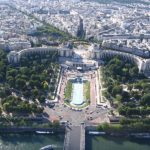 THIS hill, located in a quiet and elegant district of Paris, offers a magnificent uninterrupted view of the Eiffel Tower and museums for every taste (architecture, Asian, modern and contemporary Art, ethnography, fashion). This well-heeled part of the town is also home to luxury stores that make this Avenue and Paris the fashion capital of the world.
THIS hill, located in a quiet and elegant district of Paris, offers a magnificent uninterrupted view of the Eiffel Tower and museums for every taste (architecture, Asian, modern and contemporary Art, ethnography, fashion). This well-heeled part of the town is also home to luxury stores that make this Avenue and Paris the fashion capital of the world. IT extends 7km/4.3mi across Paris. From the Louvre to the modern arch in La Defense, ITS sites and architecture breath close to nine century of history. IT is sprinkled with some of France’s greatest monuments including seats of high power, two palaces built for the 1900 World Fair, famous museums and magnificent gardens. The section stretching 2km/1.2mi between Place de la Concorde and Arc de Triomphe is the longest and most famous avenue in Paris, THE Champs Elysées.
IT extends 7km/4.3mi across Paris. From the Louvre to the modern arch in La Defense, ITS sites and architecture breath close to nine century of history. IT is sprinkled with some of France’s greatest monuments including seats of high power, two palaces built for the 1900 World Fair, famous museums and magnificent gardens. The section stretching 2km/1.2mi between Place de la Concorde and Arc de Triomphe is the longest and most famous avenue in Paris, THE Champs Elysées.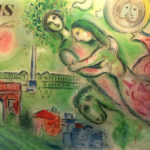 IT is one of the world’s greatest opera and ballet houses. Founded more than three centuries ago by Louis XIV, it possesses two theatres, the Palais Garnier (1875) and the Opéra Bastille (1989). ITS mission is to preserve and develop our operatic and ballet heritage and it gives more than 350 performances per year. IT is considered the cradle of ballet!
IT is one of the world’s greatest opera and ballet houses. Founded more than three centuries ago by Louis XIV, it possesses two theatres, the Palais Garnier (1875) and the Opéra Bastille (1989). ITS mission is to preserve and develop our operatic and ballet heritage and it gives more than 350 performances per year. IT is considered the cradle of ballet!
How many quartiers do you think you will find in an arrondissement? 🙂
Can you find and cross the oldest bridge, Pont Neuf? Which bridge is the city’s first iron bridge that connected the Louvre with the Institut de France on the Left Bank?
Do you remember a… Little Bridge from some of your childhood picture books?
Who is the famous book character that fell in the river from the Pont au Double?
Which bridge did you like the most? Why?
In the same area, in front of Notre Dame, can you guess where you can find the ancient ruins from Gallo-Roman Paris and from mediaeval times?
Hint: they are not above ground.
Rue St. Lois-en-l’Ille is a foody paradise. Look out for dragons on no. 51 and 54 and don’t miss La Maison Berthillon! What delicious flavor will you discover? 🙂
Can you find a marzipan pig at the boulangerie on 35 Rue des Deux Ponts?
Do you know the meaning of ITS name?
Can you find the cannon that fires at noon triggered by the rays of the sun? How many black and white columns can you count?
Can you spot an axe, a helmet, and a lion on the base of the column in the center of THIS Place? Can you find the metric stone in front of the Ministry of Justice?
What favorite food will you find at THIS market?
What cake was invented here by Nicolas Stohrer himself?
Can you find Maison de Victor Hugo, the house museum located where Victor Hugo lived for 16 years between 1832–1848?
Where can you find the only Gallo-Roman vestiges in this quartier?
Look for the model for the Paris Opera!
What was the name of the previous Palace on this hill and the name this place is still known today?
Can you find the terrace of the Publicis Drugstore at 133 avenue des Champs Elysées? How many arches can you see? Can you find a giant Egyptian obelisk decorated with hieroglyphs from the reign of Ramesses II? In what Place did you find IT?
Who painted the new ceiling for the Opéra?
ANSWERS ON MAP
- The city of Paris is divided into twenty arrondissements municipaux, administrative districts, more simply referred to as arrondissements. Each arrondissement is subdivided administratively into four quartiers, each containing a police station.
- River Seine is spanned by 37 bridges including 4 footbridges!
- Île de la Cité: Kilometre Zero of French national highways, located on the square facing the main entrance of Notre-Dame, is considered the official centre of Paris. 48.8534°N 2.3488°E
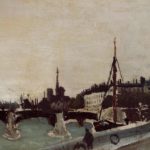 Île Saint-Louis
Île Saint-Louis- Louvre
- Rue de Rivoli
- Palais Royal
- Place Vendôme
- Le Marais
- Le Marché des Enfants Rouges
- Patisserie Stohrer
- Place des Vosges
- Hôtel de Ville de Paris
- The Latin Quarter, Paris 5th District – 5eme Arrondissement
 Shakespeare and Company
Shakespeare and Company- Musée d’Orsay
- Eiffel Tower
- Colline de Chaillot – The Hill of Chaillot
- Axe historique / La Voie Triomphale
From East to West, the three arches are: Arc de Triomphe du Carrousel, Arc de Triomphe de l’Étoile , Grande Arche de la Defense.
La Terrasse du Publicis Drugstore sur les Champs Elysées
Luxor Obelisk is in the center of Place de la Concorde  The Opéra de Paris: Palais Garnier
The Opéra de Paris: Palais Garnier
Arrondissements of Paris | Quarters of Paris
Arrondissement Paris
A comme Arrondissement
arrondissement = district, quarter, the name of a division forming Paris’ neighbourhoods
Guide To The Arrondissements Of Paris (Paris Districts) As Seen By Locals
Paris Arrondissements & Districts – A Guide To The Neighborhoods
List of bridges in Paris
Monet and the Seine: Impressions of a River
“I have painted the Seine throughout my life, at every hour, at every season. I have never tired of it: for me the Seine is always new.” —Claude Monet
Point zéro des routes de France
Maison de Marie Curie, 36 Quai de Béthune
Hôtel d’Hesselin, no 24, quai de Béthune
The word louvre means a female wolf. The kings of France once kept packs of wolves here for hunting.
The statue of Jeanne d’Arc can be found at Place des Pyramides.
59 Rivoli
“The Cannon of the Palais Royal” – In the Gardens of the Palais Royal.
The metric stone was placed in front of the Ministry of Justice on Place Vendôme so that people could check that tey were not being cheated when the revolutionary government introduced the meter as a form of measurement in 1799.
A private mansion, or hôtel particulier, is a type of large and elegant style of Parisian house that first appeared in the 13th and 14th centuries.
A few ideas at Edible Enfants Rouges 🙂
5 Reasons to Visit le Marché des Enfants Rouges in Paris
Rum babas (invented by Nicolas Stohrer himself), puits d’amour, old-fashioned religieuses, exceptional vol-au-vent…
Maison de Victor Hugo, 6 place des Vosges, 75014 Paris
The central ceremonial doors under the clock are flanked by allegorical figures of Art, by Laurent Marqueste, and Science, by Jules Blanchard. Some 230 other sculptors were commissioned to produce 338 individual figures of famous Parisians on each facade, along with lions and other sculptural features. Rodin produced the figure of the 18th-century mathematician Jean le Rond d’Alembert, finished in 1882.
Gallo-Roman vestiges include the public baths at Musée de Cluny and Arenes de Lutece – the Roman amphitheatre.
A Brief History of a Parisian Bookstore
Statue Le Rhinoceros
Works in Focus: Paintings
Model for the Paris Opera
Art and the Eiffel Tower
Sonia Delaunay and Blaise Cendrars, La Prose du Transsibérien et de la petite Jeanne de France. 1913, Paris
Trocadéro
Palais de Chaillot – Place Trocadero – Paris
SOURCES & RESOURCES
- A Walk in Paris by Salvatore Rubbino
- Arc de Triomphe in Paris
- Arrondissement Paris
- Come to Paris: History of the bridges of Paris
- Cool Stuff in Paris: Les Arènes de Lutèce
- Demographics of Paris
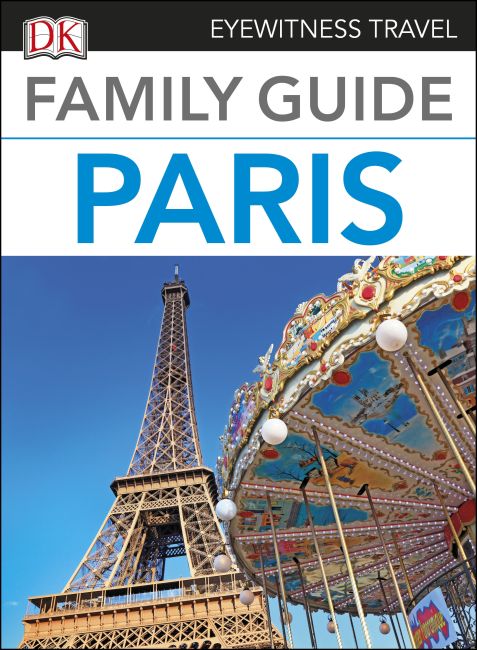 DK Eyewitness Travel: Family Guide Paris
DK Eyewitness Travel: Family Guide Paris- Find World’s Beauty:A guide to Paris by neighbourhood
- FRANCE IN PHOTOS – LE MARAIS
- I.M. Pei’s Famous Louvre Pyramid Named Timeless Architecture by AIA
- Ivor Guest, 97, Dies; Transformed Study of Dance History
- LAST METER STANDARDS IN PARIS | The Last Original Standard Metre
 MICHELIN TRAVEL: PARIS
MICHELIN TRAVEL: PARIS- PARIS MARAIS > Arts and Culture
- Paris Perfect: PARIS OPEN AIR FOOD MARKETS
- Parisian Fields
- Paris à l’époque de Philippe Auguste
- Paris Insiders Guide
- SHAKESPEARE AND COMPANY BOOKSTORE — A PARIS GEM
- The Jewish Marais
- The Story of Paris’ Wallace Fountains
Les arrondissements de Paris en détails
Carte arrondissement Paris
10 OF THE BEST PLACES TO PICNIC IN PARIS
Crossing the Seine – The Four Favorite Bridges of Paris
The History of the Louvre Museum
The Two Islands In The Heart Of Paris – Île de la Cité & Île Saint-Louis

